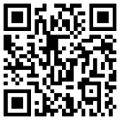An Analysis of Cybersecurity Subject and Vilanets Learning Media Towards Vocational School Students’ Digital Skills
Abstract
Full Text:
PDFReferences
AlphaBeta (commissioned by Amazon Web Services), “Unlocking Apac’S Digital Potential: Changing Digital Skill Needs and Policy Approaches February 2021,” 2021.
Indonesia, “Keputusan Menteri Pendidikan, Kebudayaan, Riset, dan Teknologi Republik Indonesia Nomor 56/M/2022 tentang Pedoman Penerapan Kurikulum dalam Rangka Pemulihan Pembelajaran.” Kementerian Pendidikan, Kebudayaan, Riset, dan Teknologi, Jakarta, 2022.
G. S. Santyadiputra and S. Hadi, “Vilanets: Inovasi Media Pembelajaran Jaringan Komputer,” Jurnal Pendidikan Teknologi dan Kejuruan, vol. 20, no. 1, pp. 57–67, Jan. 2023, Accessed: Feb. 12, 2023. [Online]. Available: https://ejournal.undiksha.ac.id/index.php/JPTK/article/view/55087
M. Antunes and C. Rabadão, “Cybersecurity and Digital Forensics – Course Development in a Higher Education Institution,” in Advances in Intelligent Systems and Computing, 2020, pp. 338–348. doi: 10.1007/978-3-030-17065-3_34.
L. González-Manzano and J. M. de Fuentes, “Design recommendations for online cybersecurity courses,” Comput Secur, vol. 80, pp. 238–256, Jan. 2019, doi: 10.1016/j.cose.2018.09.009.
E. Troja, J. E. DeBello, and N. Roman, “Teaching Efficient Computer Science and Cybersecurity Courses Amidst the COVID-19 Pandemic,” in 2021 IEEE Global Engineering Education Conference (EDUCON), IEEE, Apr. 2021, pp. 510–520. doi: 10.1109/EDUCON46332.2021.9454150.
P. Ajjimaporn, M. Gibbons, B. Stoick, and J. Straub, “Automated student assessment for cybersecurity courses,” in 2019 14th Annual Conference System of Systems Engineering, SoSE 2019, IEEE, May 2019, pp. 93–95. doi: 10.1109/SYSOSE.2019.8753803.
G. J. Longhurst, D. M. Stone, K. Dulohery, D. Scully, T. Campbell, and C. F. Smith, “Strength, Weakness, Opportunity, Threat (SWOT) Analysis of the Adaptations to Anatomical Education in the United Kingdom and Republic of Ireland in Response to the Covid-19 Pandemic,” Anat Sci Educ, vol. 13, no. 3, pp. 301–311, May 2020, doi: 10.1002/ase.1967.
EC-Council, Certified Network Defender (Version 2), 2nd ed. New Mexico: EC-Council, 2020.
Indonesia, “Keputusan Kepala Badan Standar, Kurikulum, dan Asesmen Pendidikan Kementerian Pendidikan, Kebudayaan, Riset, dan Teknologi Nomor 024/H/Kr/2022 tentang Konsentrasi Keahlian SMK/MAK pada Kurikulum Merdeka.” Kementerian Pendidikan, Kebudayaan, Riset, dan Teknologi, Jakarta, 2022.
Indonesia, Capaian Pembelajaran Mata Pelajaran Teknik Komputer dan Jaringan Fase F Untuk SMK/MAK. Jakarta: Badan Standar, Kurikulum, dan Asesmen Pendidikan Kementerian Pendidikan, Kebudayaan, Riset, dan Teknologi, 2022.
V. Soundrapandian and T. P. O’Daniel, “Redefining digital divide in the malaysian primary schools,” Journal of Advanced Research in Dynamical and Control Systems, vol. 11, no. 1 Special Issue, pp. 1429–1436, 2019, [Online]. Available: https://api.elsevier.com/content/abstract/scopus_id/85071043712
H. Latchman, M. McNaughton, and S. Anderson, “Bridging the persistent digital divide digital literacy and customized open-source solutions,” IMCIC 2021 - 12th International Multi-Conference on Complexity, Informatics and Cybernetics, Proceedings, vol. 2. pp. 192–197, 2021. [Online]. Available: https://api.elsevier.com/content/abstract/scopus_id/85105881383
H. Cheng, K. Lyu, J. Li, and H. Shiu, “Bridging the digital divide for rural older adults by family intergenerational learning: A classroom case in a rural primary school in China,” Int J Environ Res Public Health, vol. 19, no. 1, 2022, doi: 10.3390/ijerph19010371.
N. Wilson, “Sociotechnical and pedagogical barriers to technology integration,” Wealth Creation and Poverty Reduction: Breakthroughs in Research and Practice. pp. 80–98, 2019. doi: 10.4018/978-1-7998-1207-4.ch005.
S. T. Faloye, N. A. Ajayi, and R. Raghavjee, “Managing the Challenges of the Digital Divide among First Year Students: A Case of UKZN,” 2020 IST-Africa Conference, IST-Africa 2020. 2020. [Online]. Available: https://api.elsevier.com/content/abstract/scopus_id/85094320890
G. R. McWhorter, “Leveraging educational technology to meet the needs of 21st century learners,” Handbook of Research on Barriers for Teaching 21st-Century Competencies and the Impact of Digitalization. pp. 215–233, 2021. doi: 10.4018/978-1-7998-6967-2.ch012.
S. Supahar and E. Widodo, “The effect of virtual instrument system laboratory to enhance technological literacy and problem-solving skills among junior high school students,” Journal of Science Education Research, vol. 5, no. 2, pp. 34–42, Oct. 2021, doi: 10.21831/jser.v5i2.44290.
A. A. Kidan, “Pemanfaatan Laboratorium Maya: Peluang Dan Tantangan,” Jurnal Teknodik, vol. 24, no. 2, p. 147, Dec. 2020, doi: 10.32550/teknodik.v24i2.679.
L. E. de Vries and M. May, “Virtual laboratory simulation in the education of laboratory technicians–motivation and study intensity,” Biochemistry and Molecular Biology Education, vol. 47, no. 3, pp. 257–262, May 2019, doi: 10.1002/bmb.21221.
N. Jones, “Simulated labs are booming,” Nature, vol. 562, no. 7725, pp. S5–S7, Oct. 2018, doi: 10.1038/d41586-018-06831-1.
K. Aljuhani, M. Sonbul, M. Althabiti, and M. Meccawy, “Creating a Virtual Science Lab (VSL): the adoption of virtual labs in Saudi schools,” Smart Learning Environments, vol. 5, no. 1, p. 16, Dec. 2018, doi: 10.1186/s40561-018-0067-9.
E. Li, “A Hands-On Mobile Device Forensics Course in Cybersecurity Education,” in TALE 2021 - IEEE International Conference on Engineering, Technology and Education, Proceedings, IEEE, Dec. 2021, pp. 1006–1010. doi: 10.1109/TALE52509.2021.9678660.
D. Müller, Design characteristics of virtual learning environments: A theoretical integration and empirical test of technology acceptance and IS success research, vol. 9783658003. Wiesbaden: Springer Fachmedien Wiesbaden, 2013. doi: 10.1007/978-3-658-00392-0.
L. Caprara and C. Caprara, “Effects of virtual learning environments: A scoping review of literature,” Educ Inf Technol (Dordr), vol. 27, no. 3, pp. 3683–3722, Apr. 2022, doi: 10.1007/s10639-021-10768-w.
W. L. Leite, W. Xing, G. Fish, and C. Li, “Teacher strategies to use virtual learning environments to facilitate algebra learning during school closures,” Journal of Research on Technology in Education, pp. 1–15, Aug. 2022, doi: 10.1080/15391523.2022.2110335.
S. Smith, D. Cobham, and K. Jacques, “The Use of Data Mining and Automated Social Networking Tools in Virtual Learning Environments to Improve Student Engagement in Higher Education,” International Journal of Information and Education Technology, vol. 12, no. 4, pp. 263–271, 2022, doi: 10.18178/ijiet.2022.12.4.1614.
R. A. M. Valentim et al., “Virtual Learning Environment of the Brazilian Health System (AVASUS): Efficiency of Results, Impacts, and Contributions,” Front Med (Lausanne), vol. 9, Jun. 2022, doi: 10.3389/fmed.2022.896208.
E. Lacka, T. C. Wong, and M. Y. Haddoud, “Can digital technologies improve students’ efficiency? Exploring the role of Virtual Learning Environment and Social Media use in Higher Education,” Comput Educ, vol. 163, p. 104099, Apr. 2021, doi: 10.1016/j.compedu.2020.104099.
DOI: http://dx.doi.org/10.17977/um010v6i12023p16-21
Refbacks
- There are currently no refbacks.
 | Letters in Information Technology Education (LITE) |

1.png)
1.png)
4.png)
1.png)
.png)
.png)

3.png)
1.png)
1.png)

3.jpg)
